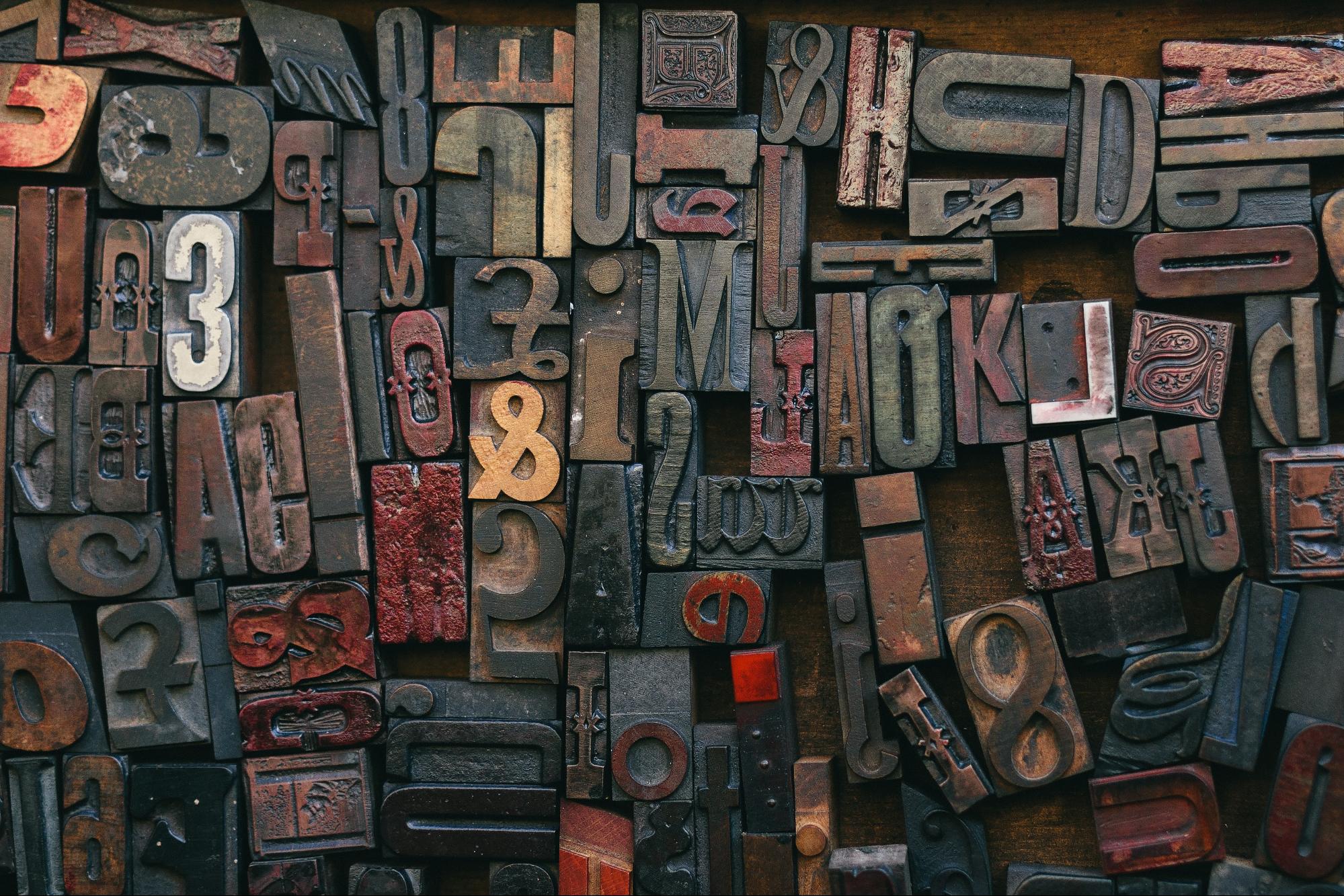
Typography, the artwork of arranging letters to make written language legible, readable, and visually interesting, is a elementary facet of graphic design. On this newbie’s information, we are going to introduce you to the essential ideas and ideas of typography, so you possibly can elevate your design abilities with an understanding of this highly effective communication device.
The Terminology of Typography
Earlier than diving into the world of typography, it’s necessary to turn into conversant in a few of the key phrases utilized by designers and typographers. Listed below are a couple of important phrases to get you began:
- Typeface: The distinctive design of a set of characters, together with letters, numbers, and punctuation marks.
- Font: A particular fashion and dimension of a typeface, comparable to common, italic, or daring.
- Baseline: The imaginary line on which the letters sit, making a uniform alignment.
- Main: The vertical area between traces of textual content, measured from baseline to baseline.
- Kerning: The adjustment of area between particular person characters in a phrase.
- Monitoring: The general spacing between characters in a block of textual content.
Typography in Observe: Wedding ceremony Invites
One particular use of typographic ideas may be discovered whereas creating marriage ceremony invites. Making certain that the textual content is superbly organized and simply readable provides to the general appeal of the invitation. Since marriage ceremony invites usually use script or ornamental typefaces, choosing the fitting font performs an necessary function in setting the tone for the occasion. To make this course of simpler, you should utilize a wording generator for marriage ceremony invites that harmonizes the font fashion and placement, making your invites visually interesting and fascinating.
Choosing a Font
Selecting the best font could make or break a design. Listed below are some issues to assist information your font choice: Be certain that the font is simple to learn, particularly in massive blocks of textual content. This usually means choosing a serif or sans serif typeface. Contemplate the undertaking’s message and target market and choose a font that enhances the general tone and elegance. Select a font that’s broadly supported throughout units and browsers to make sure a constant person expertise.
Understanding Typeface Classes
When choosing a typeface for a undertaking, it’s useful to grasp the totally different classes and kinds obtainable. Serifs are typefaces which have small ornamental strokes on the ends of the letterforms. Serifs are thought of extra conventional and are sometimes utilized in print supplies comparable to books and newspapers. Sans serif, which means “with out serif,” options clear and easy letter shapes with out the elaborations present in serif typefaces. These fonts are fashionable in digital design as a result of their legibility in small sizes on screens. Scripts are ornamental typefaces designed to resemble hand lettering and are sometimes used for invites or logos. Lastly, show typefaces are designed to seize consideration and make a daring assertion, usually used for headlines or titles, slightly than physique textual content.
Making use of Typography in Graphic Design Tasks
When you perceive the fundamentals of typography, it’s time to place it into observe. Listed below are some tips to bear in mind when working in your design tasks:
- Set up Hierarchy: Use totally different font sizes, weights, and kinds to create a visible hierarchy, guiding the viewer’s consideration to crucial info first.
- Restrict Typeface Decisions: Select two or three complementary typefaces for a undertaking to make sure visible consistency. Stick to 1 for physique textual content, and use the others for headlines, subheadings, or accents.
- Stability Kerning and Monitoring: Correctly alter the spacing to attain a balanced and harmonious structure, guaranteeing that textual content is well learn and visually interesting.
Exploring Shade
Shade can significantly influence the effectiveness of your typography. When choosing colours, think about how they’ll work together together with your chosen typeface and have an effect on readability. For instance, select contrasting colours for the textual content and background to make your textual content stand out and be extra readable. Moreover, think about the feelings and associations evoked by the colours you choose and guarantee they align with the message and tone of your undertaking.
Creating Distinction
Introducing distinction in your typography can add visible curiosity and improve readability. Create distinction by various font sizes, weights, and kinds. Daring, italic, and uppercase letters can be utilized to emphasise necessary phrases or phrases. Moreover, experiment with mixing serif and sans serif typefaces, pairing them thoughtfully to create a visually interesting and balanced design.
Mastering the Grid
A grid system can help you in organizing your textual content and reaching a cohesive structure. Grids assist create construction, information the reader’s eye, and preserve visible stability in your design. Begin by dividing your canvas into columns and rows, after which align your textual content components in line with this underlying construction. When used successfully, grids can elevate your designs and enhance the general readability of your typographic components.
Conclusion
By understanding the basics of typography, you possibly can improve your graphic design abilities and create more practical, visually participating tasks. Hold these ideas in thoughts as you discover the world of sort and experiment with varied typefaces, fonts, and structure kinds. With observe, you’ll develop a eager eye for typography and be capable to create designs that really stand out.
Originally posted 2023-11-20 16:39:04.